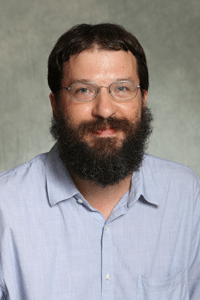Daniel G. Davis

Associate Professor
Topology
402 Maxim Doucet Hall
dgdavis@louisiana.edu
Daniel G. Davis' webpage
Ph.D. 2003 Northwestern University
M.S. 1997 University of Illinois, Urbana-Champaign
B.A. 1994 Vanderbilt University
After postdocs at Purdue and Wesleyan Universities, I came to UL Lafayette in Fall 2007. My research interests are in algebraic topology, with a focus on stable homotopy theory, especially from the chromatic perspective. My work often relates to developing the theory of spectra with a continuous action by a profinite group.
Selected research publications:
- Davis, Daniel G. and Quick, Gereon, Profinite and discrete $G$-spectra and iterated homotopy fixed points, Algebr. Geom. Topol., 16 (2016) no. 4,2257--2303.
- Davis, Daniel G. and Lawson, Tyler, A descent spectral sequence for arbitrary $K(n)$-local spectra with explicit $E_2$-term, Glasg. Math. J., 56 (2014) no. 2,369--380.
- Davis, Daniel G. and Lawson, Tyler, Commutative ring objects in pro-categories and generalized Moore spectra, Geom. Topol., 18 (2014) no. 1,103--140.
- Davis, Daniel G., Homotopy fixed points for profinite groups emulate homotopy fixed points for discrete groups, New York J. Math., 19 (2013),909--924
- Davis, Daniel G. and Torii, Takeshi, Every $K(n)$-local spectrum is the homotopy fixed points of its Morava module, Proc. Amer. Math. Soc., 140 (2012) no. 3,1097--1103.
- Davis, Daniel G., Function spectra and continuous $G$-spectra, Bull. Lond. Math. Soc., 43 (2011) no. 6,1141--1150.
- Davis, Daniel G., Delta-discrete $G$-spectra and iterated homotopy fixed points, Algebr. Geom. Topol., 11 (2011) no. 5,2775--2814.
- Davis, Daniel G., Obtaining intermediate rings of a local profinite Galois extension without localization, J. Homotopy Relat. Struct., 5 (2010) no. 1,253--268.
- Behrens, Mark and Davis, Daniel G., The homotopy fixed point spectra of profinite Galois extensions, Trans. Amer. Math. Soc., 362 (2010) no. 9,4983--5042.
- Davis, Daniel G., Epimorphic covers make $R^+_G$ a site, for profinite $G$, Theory Appl. Categ., 22 (2009),No. 16, 388--400
